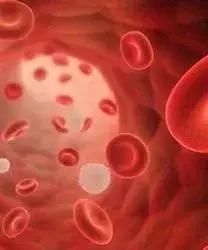Article
Parsaclisib Elicits Lasting Responses in Relapsed/Refractory Marginal Zone Lymphoma
Author(s):
Parsaclisib demonstrated early and long-lasting responses in patients with BTK-naïve, relapsed/refractory marginal zone lymphoma, according to findings from the phase 2 CITADEL-204 trial.

Parsaclisib demonstrated early and long-lasting responses in patients with BTK-naïve, relapsed/refractory (R/R) marginal zone lymphoma (MZL), according to findings from the phase 2 CITADEL-204 trial (NCT03144674) that were presented during the 2021 ASH Annual Meeting and Exposition.1
Results demonstrated an objective response rate of 58.3%, a duration of response (DOR) of 12.2 months, and progression-free survival (PFS) of 16.5 months, according to Tycel Jovelle Phillips, MD, clinical associate professor of hematology (internal medicine), medical oncology, and internal medicine at University of Michigan Health.
The open-label, phase 2 CITADEL–204 study enrolled 100 patients and evaluated them in 2 cohorts: patients in cohort 1 received ibrutinib (Imbruvica). This cohort was closed to enrollment for feasibility reasons. Phillips presented data from cohort 2, the BTK inhibitor-naïve cohort.2 Patients in cohort 2 were allocated 1:1 to a weekly dosing group (n = 28) and a daily dosing group (n = 72). Patients in the weekly group received 20 mg of parsaclisib daily for 8 weeks followed by 20 mg once weekly, and patients in the daily regimen received 20 mg of parsaclisib daily for 8 weeks followed by 2.5 mg once daily. The primary end point was objective response rate (ORR), and the secondary end points were complete response rate (CRR), duration of response (DOR), progression-free survival (PFS), overall survival (OS), best percentage change in disease burden from baseline, and safety and tolerability.
The ORR was 58.0% (95% CI, 47.7%-67.8%) for all patients (n = 100), and 58.3% (95% CI, 46.1%-69.8%) for the daily group. ORR by investigator assessment was 72.0% for all patients and 69.4% in the daily group. Among patients who achieved complete or partial response, 65.5% of responses occurred at the first disease assessment with a median time to response of 8.1 weeks. The median DOR was 12.2 months (95% CI, 8.1-17.5) for all patients and the daily group. The median PFS was 16.5 months (95% CI, 13.5–19.6) for all patients and was 16.5 months (95% CI, 11.5-20.6) for the daily group. The median OS was not reached. All evaluable patients (81/81) had regression at the target lesions or spleen, and 83% (67/81) of evaluable patients had greater than 50% reduction in best percentage change from baseline.
Parsaclisib is a potent and selective next-generation PI3Kδ inhibitor.
Eligible patients must have been at least 18 years of age, had a confirmed MZL histology, at least 1 prior line of systemic therapy including anti–CD20 treatment, and either disease progression or inadequate response to their most recent regimen. Patients must have had at most an ECOG status of 2. Patients were to have no previous BTK inhibitors within the BTK inhibitor–naïve cohort nor any PI3K inhibitors in either cohorts. Patients were not to have allogeneic hematopoietic stem cell transplants (HSCT) within 6 months, and patients were not to have autologous HSCTs within 3 months. Investigators conducted assessments through CT/MRI using the Lugano criteria.3 Radiology based end points were determined by an independent review committee.
The median age for patients was 71.0 years (range, 35-95). The daily dosage cohort’s median age was 72.0 years (range, 35-95). Fifty-three percent of patients were male. Ninety-five percent of patients had an ECOG status of 1 or less. Of the MZL subtypes displayed, 31% had nodal, 34% had extranodal, and 35% had splenic MZL subtypes.
Investigators saw 96% of any grade treatment emergent adverse events (TEAEs) in greater than 10% of all-treated patients. Within the daily dose group, 97% of patients experienced TEAEs. The most common TEAEs seen were diarrhea (47%), cough (23%), and rash (18%). Grade 3 or worse TEAEs occurred in 63% of patients with the most common being diarrhea (12.0%) and neutropenia (9.0%). TEAEs leading to dose interruption or dose reduction occurred in 56.0% and 16.0%, respectively, for all patients. Within the daily group, TEAEs led to dose interruption in 60% of patients and dose reduction in 17% of patients. Diarrhea was the most common TEAE in the daily dosing group that led to dose interruptions (15%), reductions (7%), and discontinuations (12.5%). Serious TEAEs were seen in 47.0% of patients with the most common being pneumonia (9.0%) in all patients. Fatal TEAEs affected 6.0% of patients, resulting in one death from febrile neutropenia and 1 death from sepsis. These fatal TEAEs were considered treatment related.
Parsaclisib proved to have rapid and durable responses among BTK inhibitor–naïve patients, and ORRS were comparable among patients with nodal, extranodal, and splenic MZL. Parsaclisib has demonstrated a manageable safety profile and was generally well tolerated.
References
- Phillips T, Abraham A, Caterina P, et al. Efficacy and safety of parsaclisib in patients with relapsed or refractory marginal zone lymphoma: primary analysis from a phase 2 study (CITADEL-204). Presented at: 63rd ASH Annual Meeting; December 11, 2021; Atlanta, GA. Abstract 44. Accessed December 11, 2021.
- Shin N, Stubbs M, Koblish H, et al. Parsaclisib is a next-generation phosphoinositide 3-kinase δ inhibitor with reduced hepatotoxicity and potent antitumor and immunomodulatory activities in models of b-cell malignancy. J Pharmacol Exp Ther. 2020;374(1):211-222. doi:10.1124/jpet.120.265538
- Cheson BD, Fisher RI, Barrington SF, et al. Recommendations for initial evaluation, staging, and response assessment of Hodgkin and non-Hodgkin lymphoma: the Lugano classification. J Clin Oncol. 2014;32(27):3059-3068. doi:10.1200/JCO.2013.54.8800


















%20(2)%201-Recovered-Recovered-Recovered-Recovered-Recovered-Recovered-Recovered-Recovered-Recovered-Recovered-Recovered-Recovered-Recovered-Recovered-Recovered-Recovered-Recovered.jpg?fit=crop&auto=format)
%20(2)%201-Recovered-Recovered-Recovered-Recovered-Recovered-Recovered-Recovered-Recovered-Recovered-Recovered-Recovered-Recovered-Recovered-Recovered-Recovered-Recovered-Recovered.jpg?fit=crop&auto=format)
